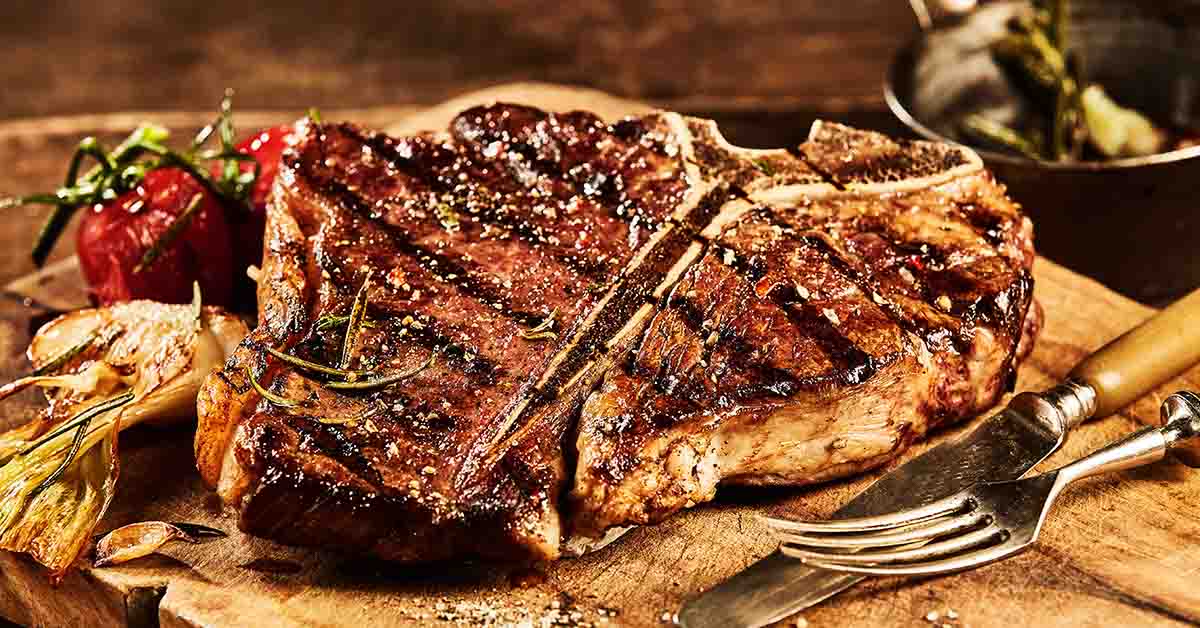Red meat has a bad rap, and for good reason. It tends to be full of saturated fat, which can raise cholesterol levels and heighten the risk of stroke and heart disease. However, for people who don’t have conditions that require cutting out this kind of fat, red meat can be beneficial when eaten in moderation. However, not all steaks are alike. They come from different parts of the animal, which means varying amounts of protein, fat, and other important factors when it comes to choosing a delicious cut—and a healthier one.
Health Benefits of Steak
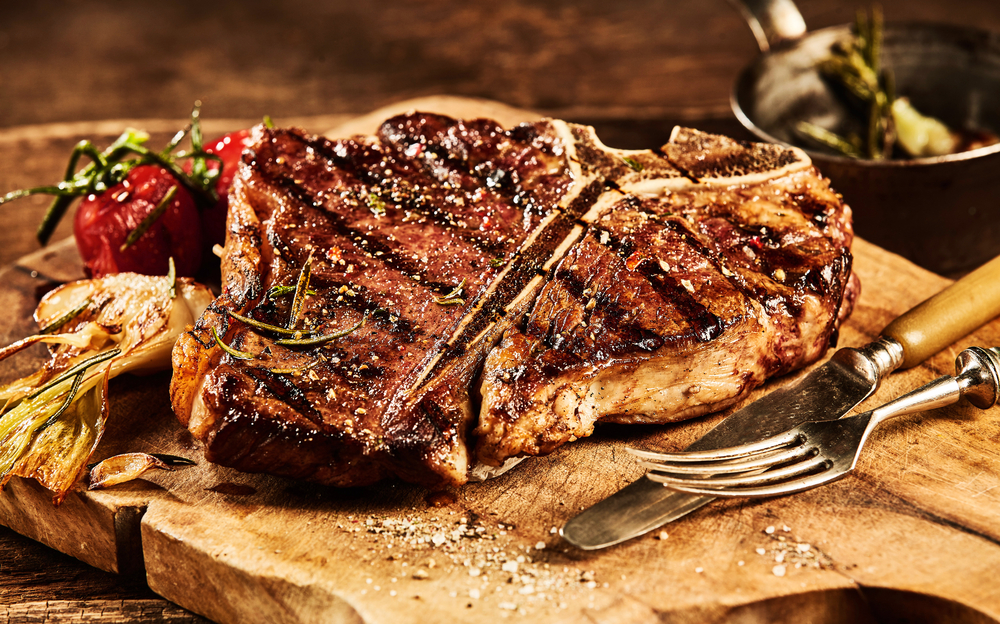
Heart health aside, meat is most well-known for its high protein content. Beef is considered a high-quality, complete protein with all of the amino acids needed by the body. Plus, it contains vitamins like vitamin B12, niacin, selenium, zinc, and iron. It’s also naturally free of sugar and carbohydrates.
Steak’s protein and nutrient content offers some potential health benefits, including lowering the risk of anemia, boosting the immune system, and preventing muscle loss. Just remember to opt for freshly prepared meats, instead of processed meats, as well as smaller portions. And remember the type of steak matters, so here’s a list from the unhealthiest to the healthiest cuts.
Read More: 7 Vegan Foods High In Protein That Make Meat Obsolete
The Unhealthiest Steak: Prime Rib
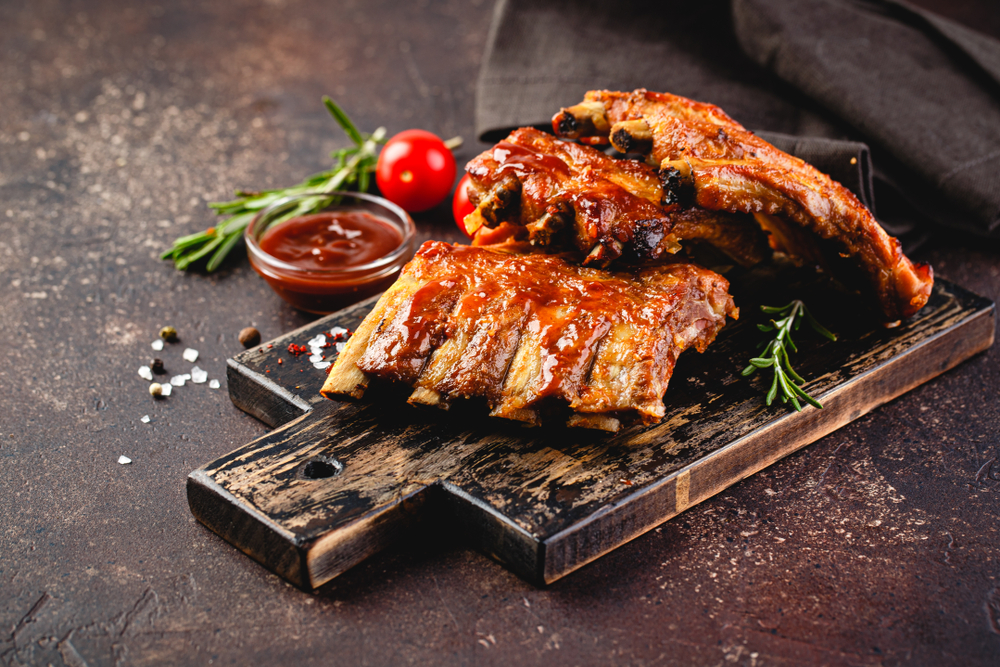
A ribeye steak is called prime rib when served as a roast or Tomahawk when it’s on the bone. Either way, it’s a rich and juicy meat that’s marbled with fat. About 3.5 ounces of ribeye contains about 10 grams of saturated fat, which covers almost half of the recommended daily limit. So consider opting for a portion that’s 3 or 5 ounces instead of a typical restaurant serving of a whopping 16 ounces.
Delmonico Steak
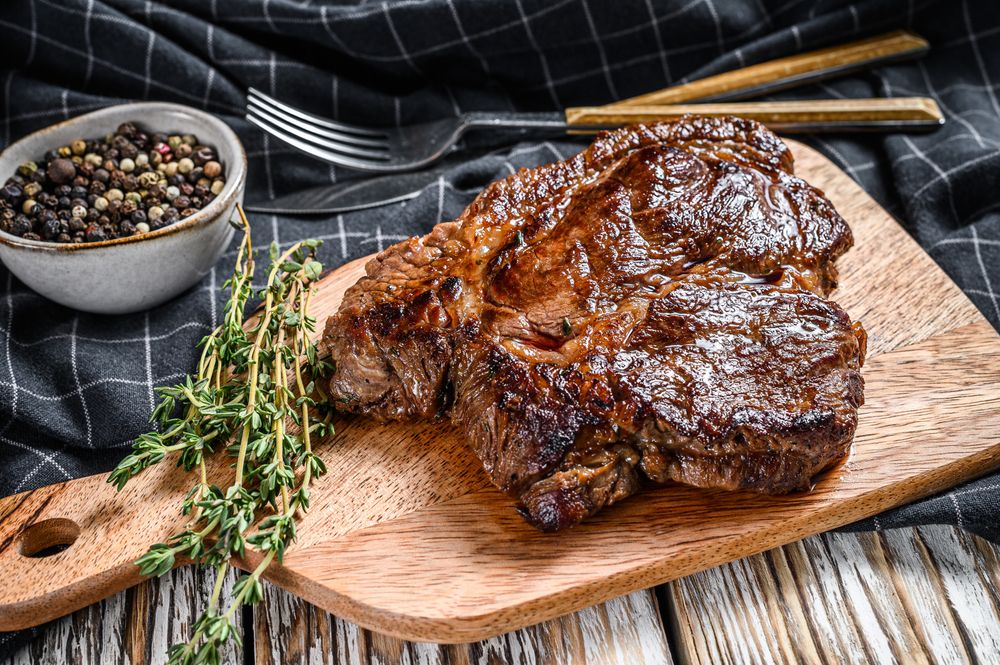
Three and a half ounces of Delmonico steak, also known as Chuck Eye, contains 17 grams of fat plus 7 grams of saturated fat. This may seem reasonable, but remember that it’s typically served about 10 ounces per person. So if you order the Delmonico, enjoy a smaller portion.
T-Bone Steak
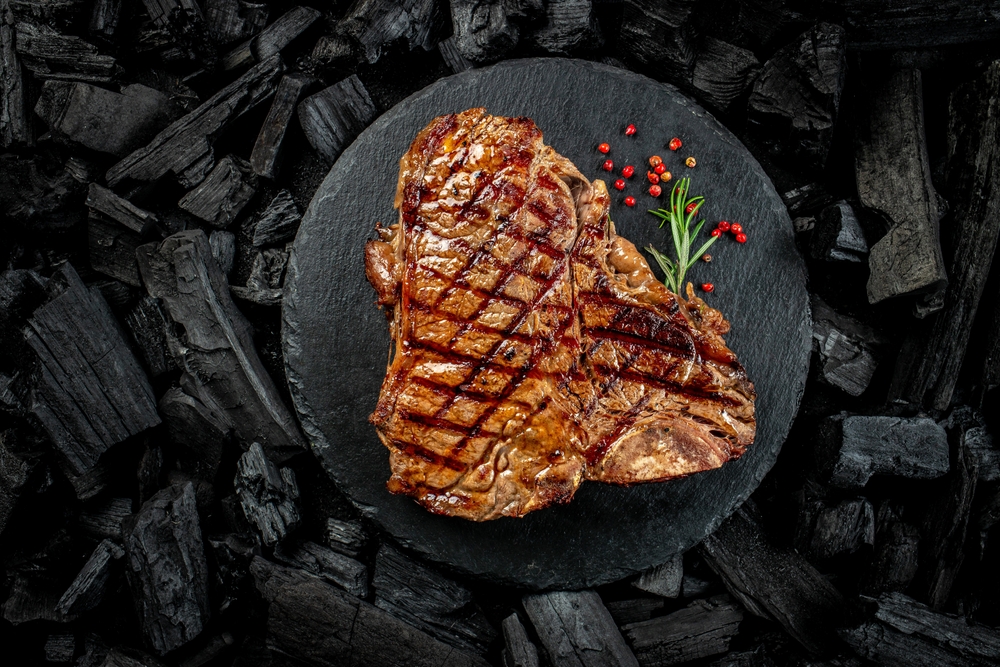
This cut got its name for its T-shaped bone between two pieces of meat, a filet mignon, and a New York Strip. Like with the previous steaks, a serving of 3 ounces contains only 7 grams of saturated fats (32% of the daily recommendations). However, the standard serving is much larger, around 12 to 18 ounces.
Skirt Steak
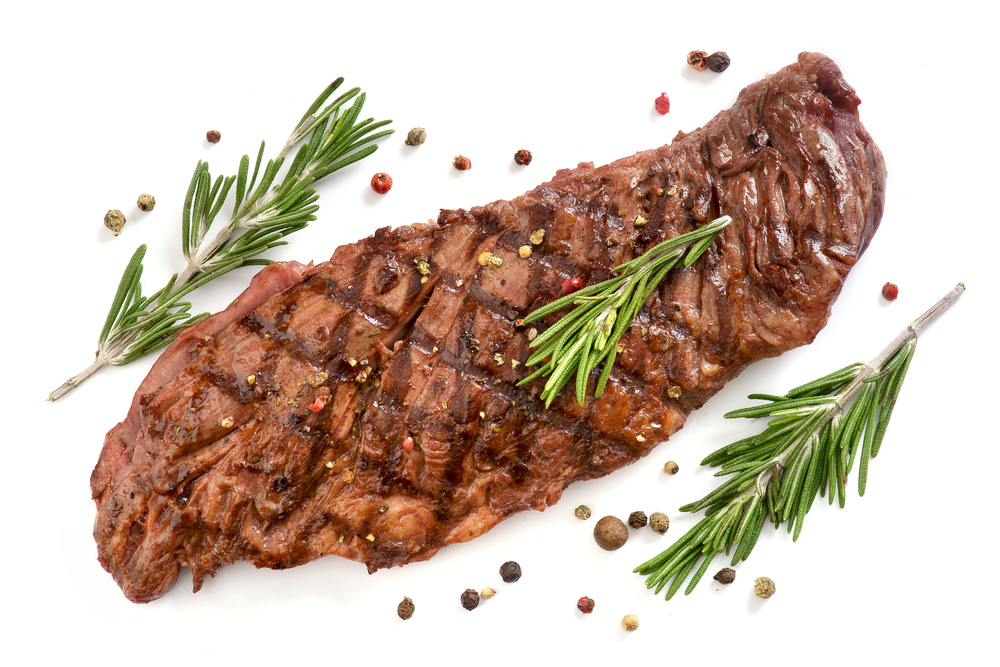
The skirt steak definitely steps toward being a healthier cut of meat, with only 6 grams of saturated fat in 100 grams. It’s also high in protein compared to many other cuts, containing 29 grams per 100-gram serving. (For comparison, Delmonico and T-Bone steaks contain 21 grams of protein per serving.) However, it still contains 15 grams of fat. The high muscle content creates a tougher texture compared to those lower in protein.
Flap Steak
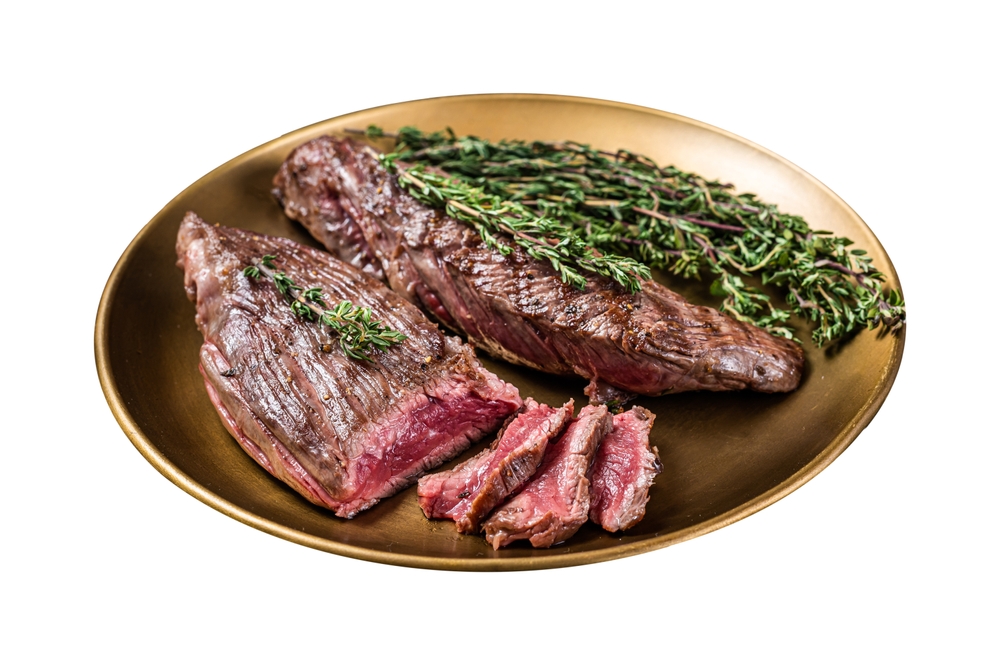
A 100-gram serving of flap steak provides 4 grams of saturated fat, which is 18% of the recommended daily limit. It also tends to be more cost-effective compared to other varieties.
Read More: Are Meats on “Clearance” Safe To Eat?
Flat Iron Steak
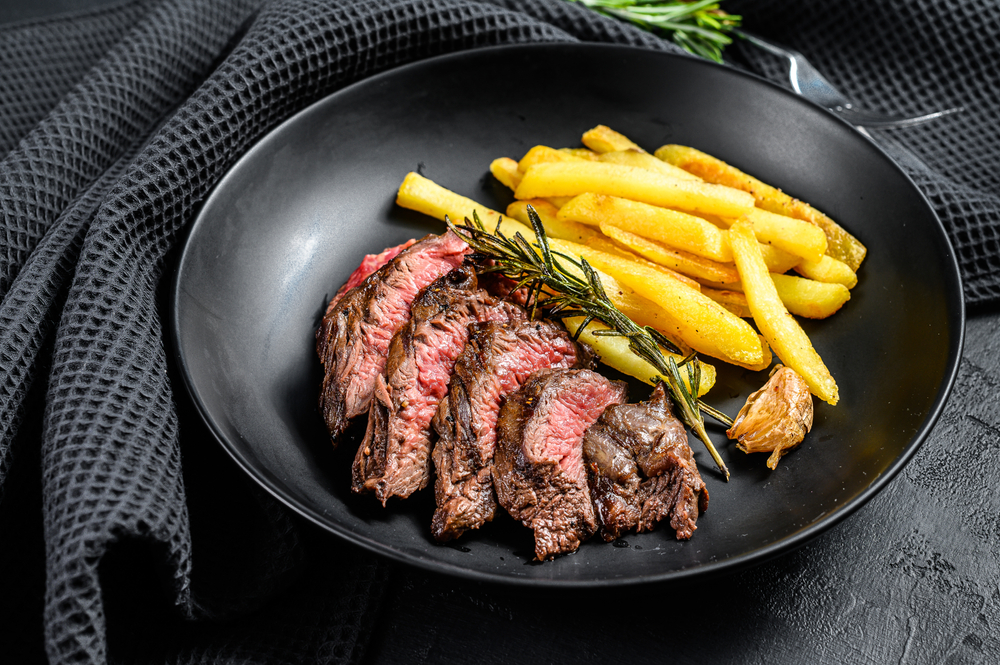
Also called a boneless top chuck steak, a flat iron is lower in fat compared to previous entries on this list. However, it also comes with some unappetizing gristle that should be sliced off. Like the flap steak, this one is usually less expensive. Cooking it on low heat for a long time can naturally bring out the flavor and juiciness without missing the extra fat.
Top Sirloin
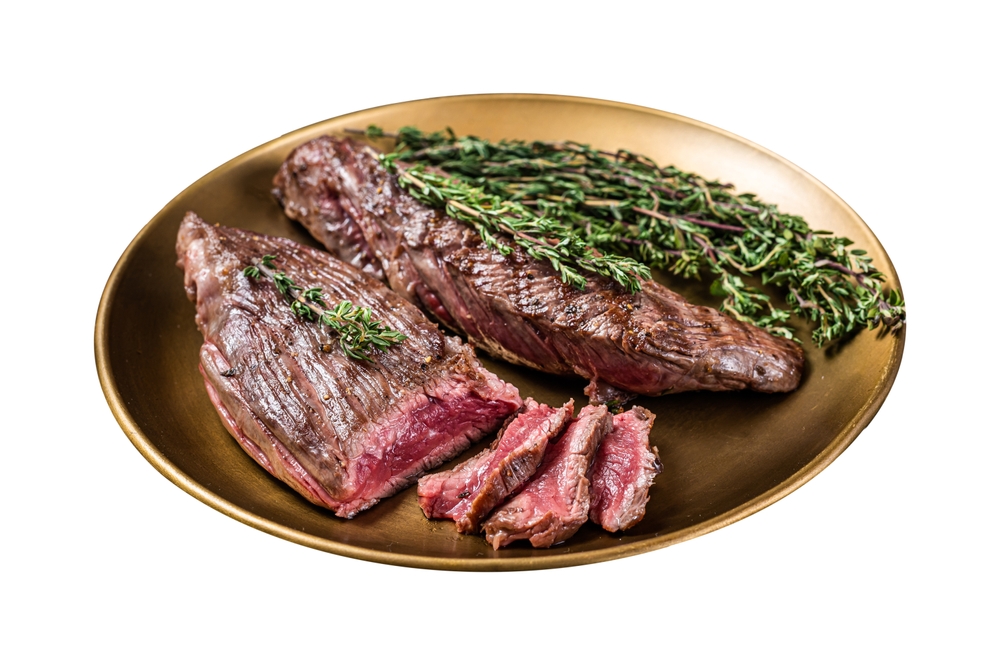
Top sirloin is a popular cut of meat that can be prepared in multiple ways, including grilled. The overall nutrition content of this dish depends on how it’s cooked and served. But it typically contains only 4 grams of saturated fat with 29 grams of protein per 100-gram serving.
Filet Mignon
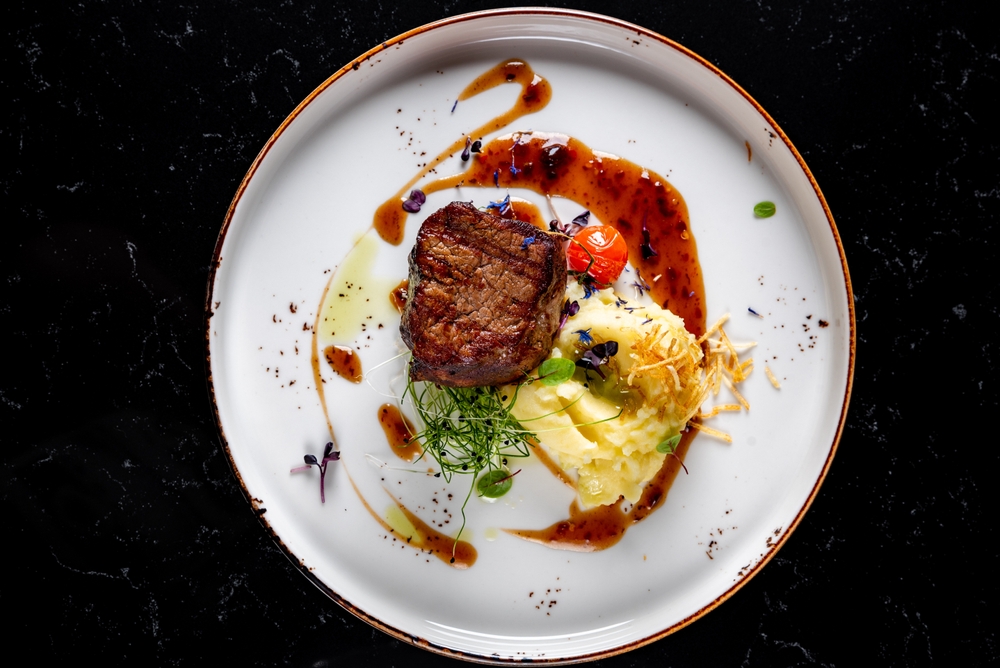
Some people may be surprised to see filet mignon on the healthy side of this list because of its juicy and tender flavor. However, it’s considered a lean cut of beef though it has 10 grams of fat because only 4 grams of it is saturated. So people could enjoy the rich texture without the extra saturated fat of prime rib or a T-bone.
Bottom Round Steak
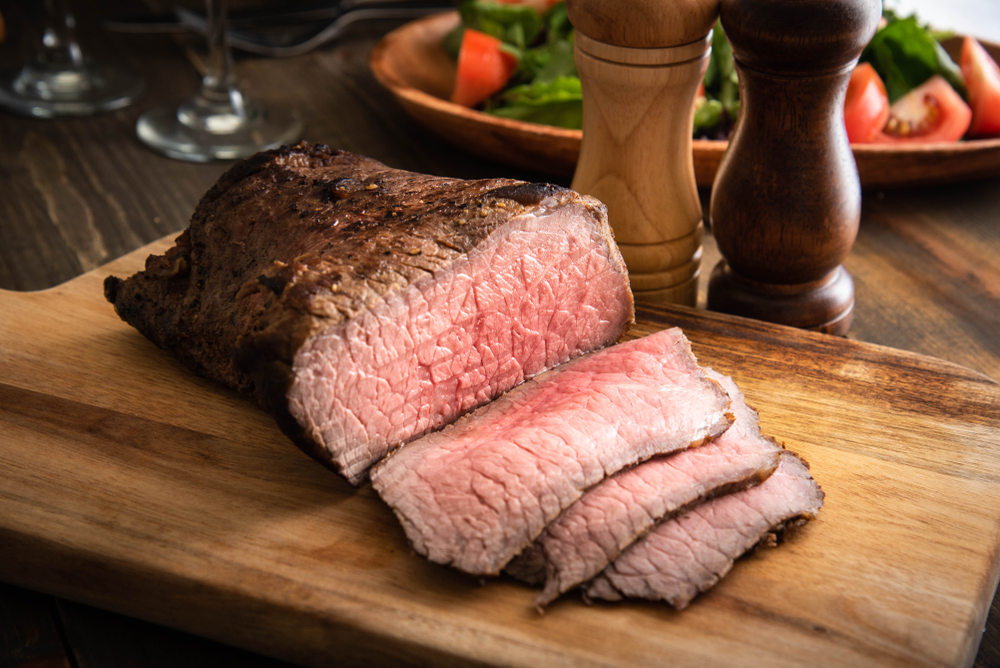
Here’s another option that’s high in protein and low in fat. It contains 8 grams of total fat and 3 grams of saturated fat per 3.5-ounce serving. Plus, it’s a great choice for marinades, slow cooking, and family-style dining, which makes it easy to enjoy a smaller portion.
Top Loin
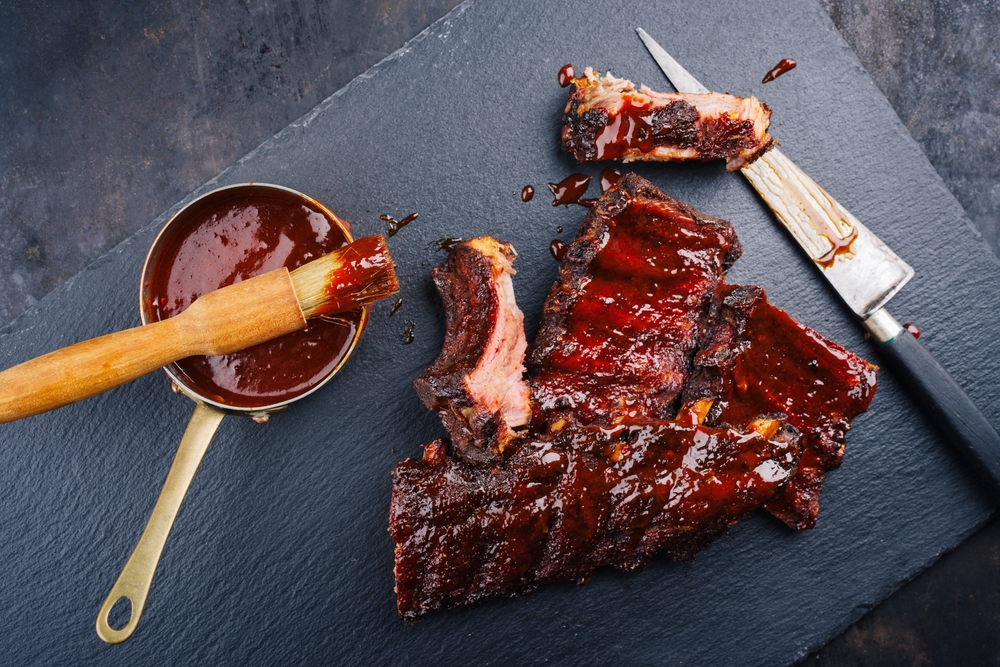
It’s also known as a shell steak, New York Strip Steak, and Kansas City steak. No matter the name, this is a lean cut of meat with a high protein and a buttery texture despite its low saturated fat content.
The Healthiest Steak: London Broil
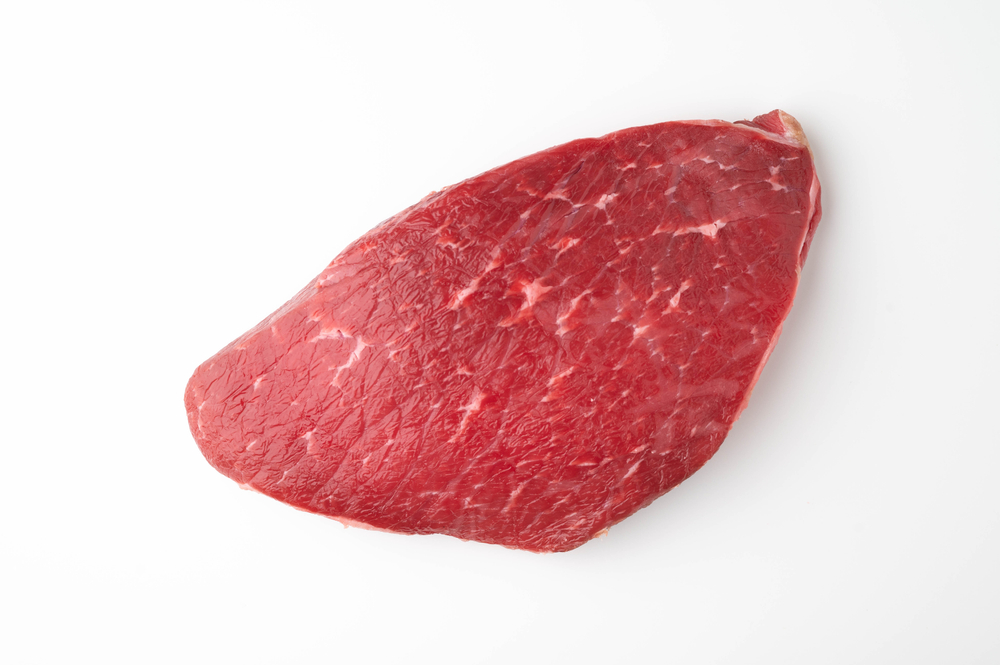
And the winner is the London Broil. It has only 7 grams of fat (3 grams saturated) and 36 grams of protein per 100-gram serving. These cuts may be difficult to cook because they can be tough and hard to chew if not done right. But when it’s broiled or braised on low heat for a long time, the tough muscle fibers slowly break down, creating a rich and tender steak dinner.
Sources
- “The Best & Worst Cuts of Steak—Ranked by Nutrition!.” Eat This, Not That. Kelsey Kunik, RDN. September 18, 2023
- “Steak Nutrition Facts and Health Benefits.” Very Well Fit. Malia Frey, M.A., ACE-CHC, CPT. May 24, 2024
- “Beef, steak, ribeye, lean and fat eaten.” USDA. Food Data Central.
- “Foods High in Saturated Fat.” WebMD. Mahammad Juber, MD. November 29, 2022
